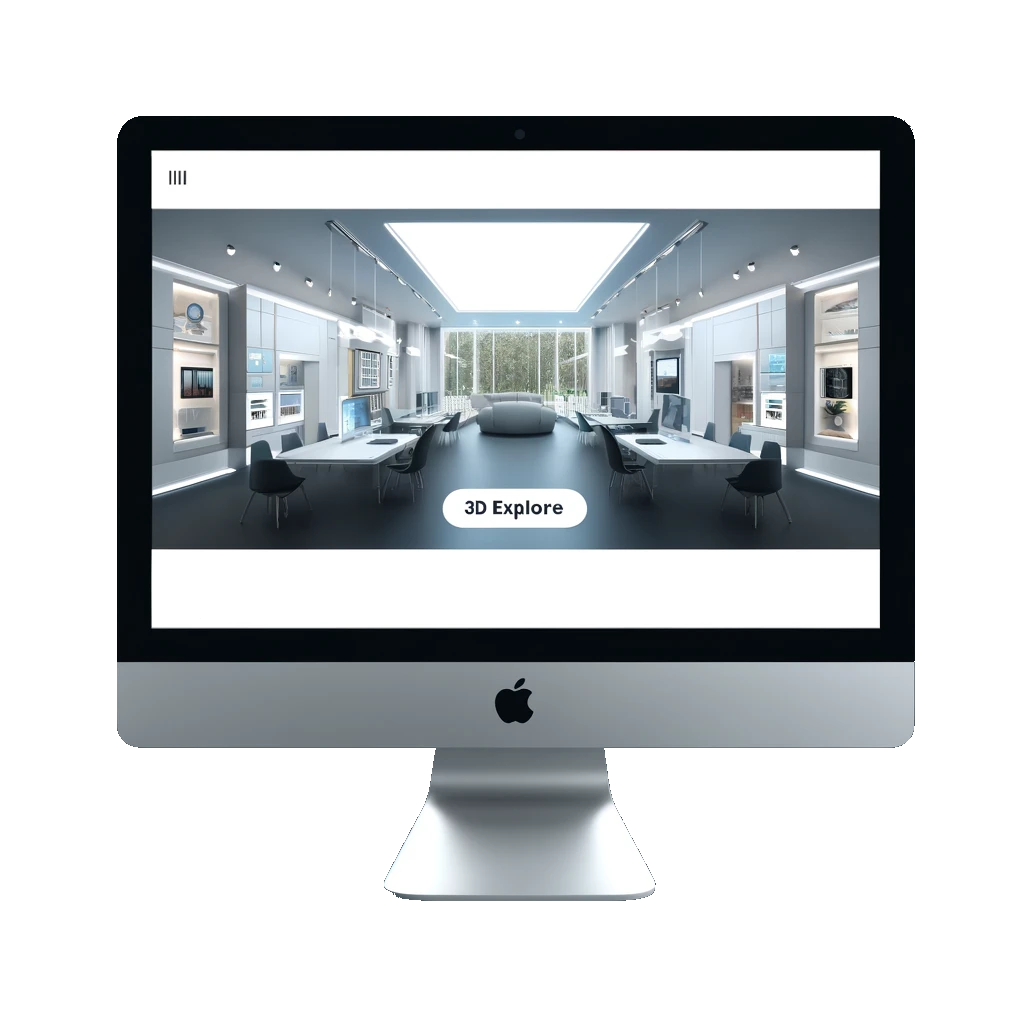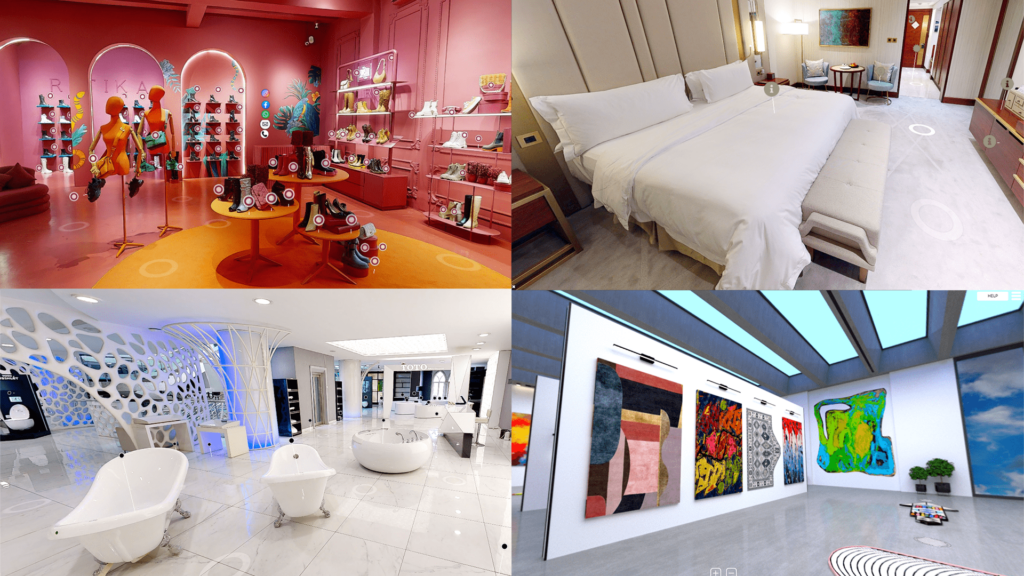Welcome to our comprehensive guide on how to use your 360 virtual tour to enhance your business’s ROI. With the growing popularity of immersive virtual experiences, 360 virtual tours have become a must in digital marketing strategies across various regions, including Lebanon, Qatar, Saudi Arabia, Bahrain, Iraq, Belgium, Spain, Europe, and more. Whether you are looking to attract more visitors, increase engagement, or convert leads into loyal customers, our blog outlines 12 essential strategies that will guarantee a full utilization of your 360 virtual tour or VR experience.
Integrating Your 360 Virtual Tour on Your Website

Embedding your 360 virtual tour directly onto your website can drastically improve user engagement and retention. This integration not only showcases your facilities, products, or services in an immersive way but also keeps potential customers on your site longer, which can improve conversion rates.
Visitors are provided with an interactive experience that is more engaging than static images or text, potentially leading to higher interest and conversion.
How to Implement: Place the virtual tour on high-traffic pages, such as the homepage or specific product pages. Use clear call-to-action buttons that invite visitors to start the tour, ensuring it loads quickly and is mobile-responsive. Regularly update the tour to keep it fresh and relevant.
Leveraging 360 Virtual Tours on Social Media

Social media platforms offer a vast audience base for showcasing your 360 virtual tours. By sharing these tours on platforms like Facebook, Instagram, and Twitter, you can increase brand awareness and attract more visitors to your site.
Social media can help spread your virtual tour virally, reaching a broader audience quickly. Engaging content such as virtual tours encourages shares and interactions, boosting your social media presence.
How to Implement: Create captivating posts and stories that feature snippets of your tour with links to the full experience on your website. Use hashtags to increase the visibility of your posts and engage with followers who comment on or share your tour. Consider paid promotions to target specific demographics who are most likely to be interested in your offerings.
Enhancing Email Marketing with 360 Virtual Tours

Email remains a powerful marketing tool, and including your 360 virtual tours in emails can significantly enhance the effectiveness of your campaigns. This approach not only re-engages your existing customer base but also attracts new subscribers by offering valuable, interactive content.
Emails featuring 360 virtual tours stand out in crowded inboxes. They offer recipients a visually engaging reason to click through, driving traffic to your site and increasing the chances of conversion.
How to Implement: Embed a thumbnail or a clickable link of the tour in your newsletters or promotional emails. Highlight it as a key feature of the email to entice clicks. Make sure to track the performance through click rates and adjust your strategy based on user engagement.
Publishing Your 360 Virtual Tour to Google Street View

Integrating your 360 virtual tour with Google Street View can enhance your local search visibility and credibility. By making your tour accessible on Google’s platform, you tap into a large audience of users who use Google Maps and Street View for exploration and discovery.
Publishing to Google Street View helps potential customers discover your business more easily when searching for local information. It offers an immersive preview of your space, encouraging in-person visits or inquiries.
How to Implement: Ensure your tour meets Google’s quality standards, then use the Street View app to upload your images. Properly geotag each segment of your tour to ensure accuracy in location mapping. Regularly update the tour to reflect any significant changes to your space.
At oVRworldwide, all our 360 Virtual Tours are uploaded to google street view.
Incorporating 360 Virtual Tours in Customer Service & Sales Team Communications

Enhance your customer service by including your 360 virtual tour in communications, particularly in welcoming messages to new customers or in closing messages following support interactions. This approach uses the immersive nature of virtual tours to give customers a better understanding of your facilities or products.
Using 360 virtual tours in customer service interactions can increase transparency, build trust, and improve customer satisfaction by providing a comprehensive visual context. This can be particularly effective in industries where the layout, facilities, or ambiance is important.
How to Implement: Integrate links to your virtual tour in automated chat responses, email footers, and support messages. Train customer service teams to encourage customers to view the tour as part of resolving their inquiries or when providing information about services and facilities.
Optimizing 360 Virtual Tours for Search Engines

SEO is critical for ensuring your 360 virtual tour is discoverable online. Optimizing the tour and its hosting page can significantly boost your search engine rankings and attract more organic traffic.
Well-optimized content can appear higher in search results, making it more likely that potential customers will engage with your virtual tour. This includes optimizing metadata, using relevant keywords, and creating backlinks to the tour.
How to Implement: Use keyword-rich titles and descriptions for your virtual tour pages. Include alt text for any embedded images and ensure the page’s content is informative and relevant. Build links to your tour from other areas of your site and encourage external sites to link back to your tour.
Driving Traffic with Ad Campaigns: Promoting 360 Virtual Tours through Google and Facebook Ads

Utilize paid advertising platforms like Google Ads and Facebook Ads to drive targeted traffic to your 360 virtual tour. Crafting compelling ad campaigns that highlight the immersive experience of your virtual tour can attract a more engaged audience.
Paid advertising allows you to reach a broader and more specific audience quickly. By targeting ads based on user interests, demographics, and behaviors, you can efficiently attract potential customers who are more likely to be interested in your offerings.
How to Implement: Develop creative ads that feature enticing snippets or screenshots of your virtual tour. Segment your audience and tailor your messages to fit different groups for more personalized engagement. Monitor ad performance regularly to adjust bids, targeting, and creative elements for optimal results.
Influencer Marketing: Leveraging Partnerships to Amplify Your 360 Virtual Tour
Collaborate with influencers and bloggers who can showcase your 360 virtual tour to their followers. Choosing influencers in your industry or those whose audience matches your target market can extend your reach and credibility.
Influencers can provide authentic and trusted promotions, helping to draw their audience’s attention to your virtual tour. This strategy taps into the influencer’s established relationship with their followers, which can lead to higher engagement rates.
How to Implement: Identify influencers whose brand aligns with your business. Plan a campaign where influencers can creatively integrate your virtual tour into their content, perhaps through a live walkthrough, a review, or a contest. Ensure the collaboration is transparent and adheres to advertising standards.
Virtual Reality and 360 Tours: Creating Immersive Experiences for Your Audience

Enhance the engagement of your 360 virtual tour by offering a Virtual Reality (VR) option. This provides a deeply immersive experience that can significantly impress potential customers and provide them a unique view of your offerings.
VR technology can transform a standard virtual tour into an extraordinary experience, making it more memorable and impactful. This can be especially appealing in sectors like real estate, tourism, and event planning, where the feel of a space is crucial.
How to Implement: Equip your virtual tour with VR capabilities using compatible software. Offer VR headset trials at your location or events, and promote the VR option through all your marketing channels. Provide clear instructions on how users can enjoy the tour in VR mode to ensure accessibility.
Showcasing 360 Virtual Tours at Trade Shows and Events
Use 360 virtual tours as a key feature of your presentations at trade shows, exhibitions, or business events. Setting up interactive stations where attendees can explore your virtual tour can capture interest and engage potential clients in a dynamic way.
At events where you have only a short time to capture the attention of passersby, a 360 virtual tour can serve as an engaging tool that provides a comprehensive view of your offerings without the need for extensive physical setups.
How to Implement: Equip your booth with tablets or VR headsets preloaded with your virtual tour. Train your staff to assist visitors in navigating the tour and to highlight key features and benefits. Use signage to attract attention to your interactive display.
QR Codes and 360 Virtual Tours: A Quick Access Guide
Use QR codes as a simple and effective way to provide instant access to your 360 virtual tour. By placing QR codes in strategic locations, such as on business cards, brochures, or posters, you can facilitate immediate engagement with your tour.
QR codes bridge the gap between physical and digital content, providing users with quick and easy access to your virtual tour. This can be especially useful in direct marketing, at points of sale, or during networking events where immediate demonstration of your facilities or services can captivate potential clients.
How to Implement: Generate a QR code that links directly to your virtual tour. Ensure the landing page is mobile-friendly and that the tour is optimized for quick loading. Distribute the QR codes on all relevant print material and digital platforms. Consider using these in email signatures or even on your storefront window.
Content Marketing with 360 Virtual Tours: Writing Engaging Blog Posts and Articles
Create compelling content that features and revolves around your 360 virtual tour. Blog posts and articles can provide detailed insights into the areas covered by the tour, share stories related to the spaces, and highlight unique features or benefits.
Well-crafted content not only enhances SEO but also increases engagement by providing context and background that may encourage readers to explore the virtual tour in depth. This strategy helps to build a narrative around your tour, enhancing its appeal and providing value to your audience.
How to Implement: Develop a series of blog posts or articles that delve into different aspects of the tour. Use engaging headlines and incorporate keywords to boost SEO. Include screenshots and direct links to the tour, and encourage sharing on social media to increase reach. You might also create guest posts for other blogs or platforms to attract a wider audience.

